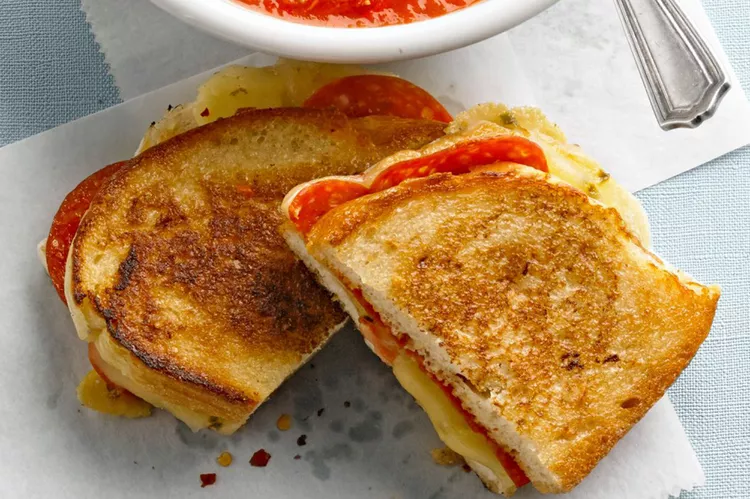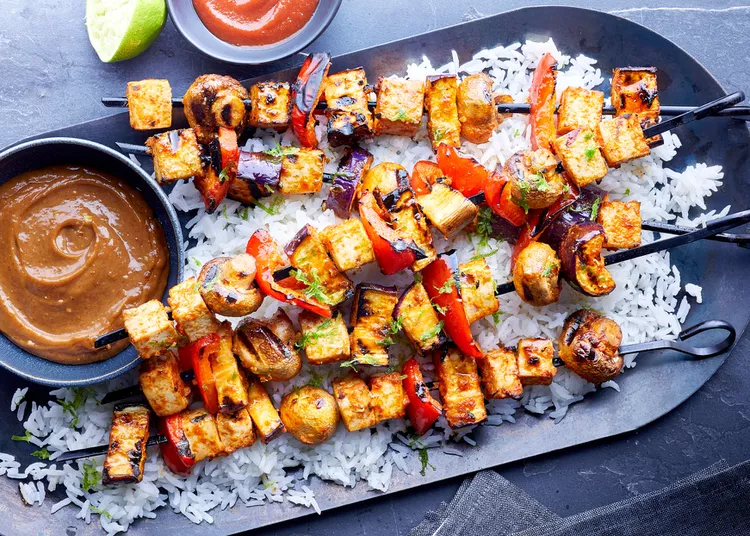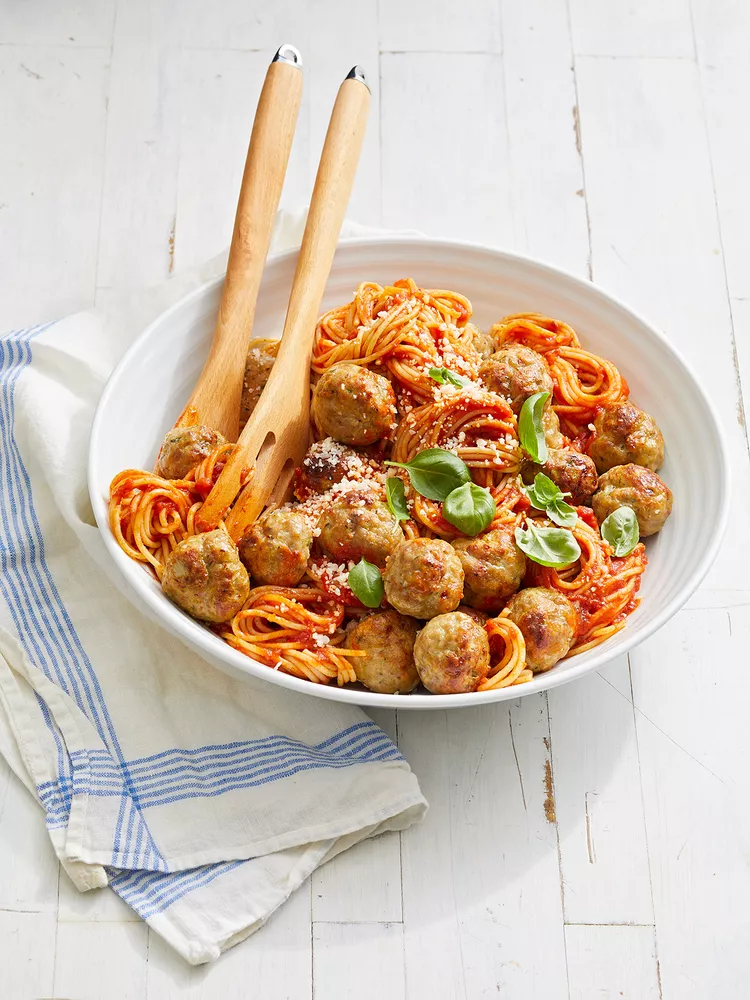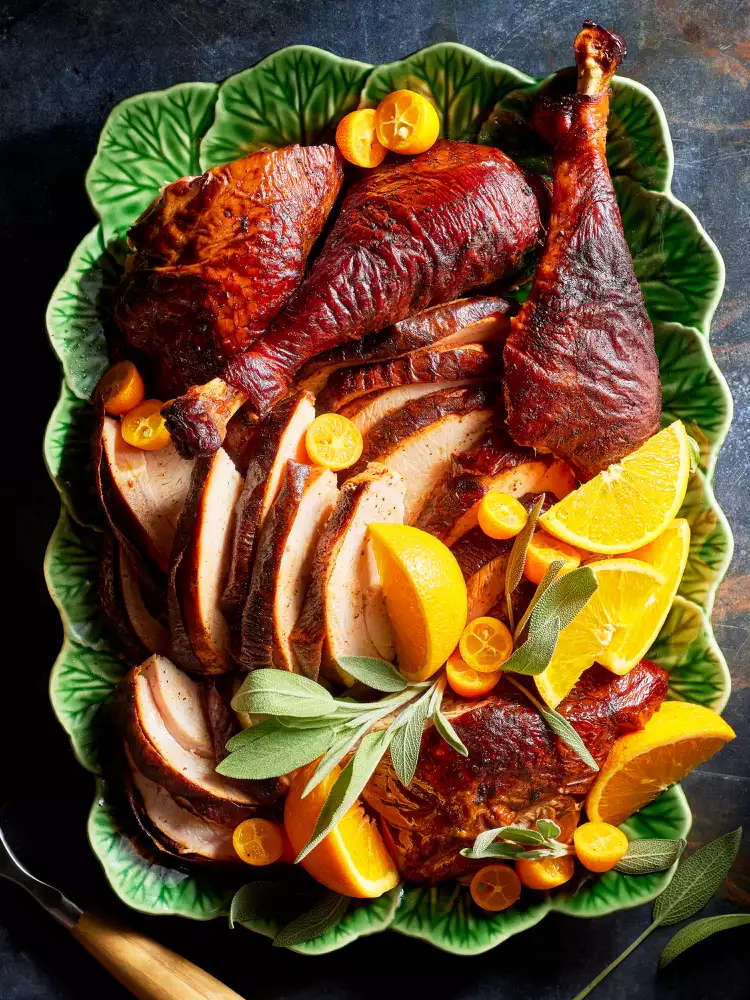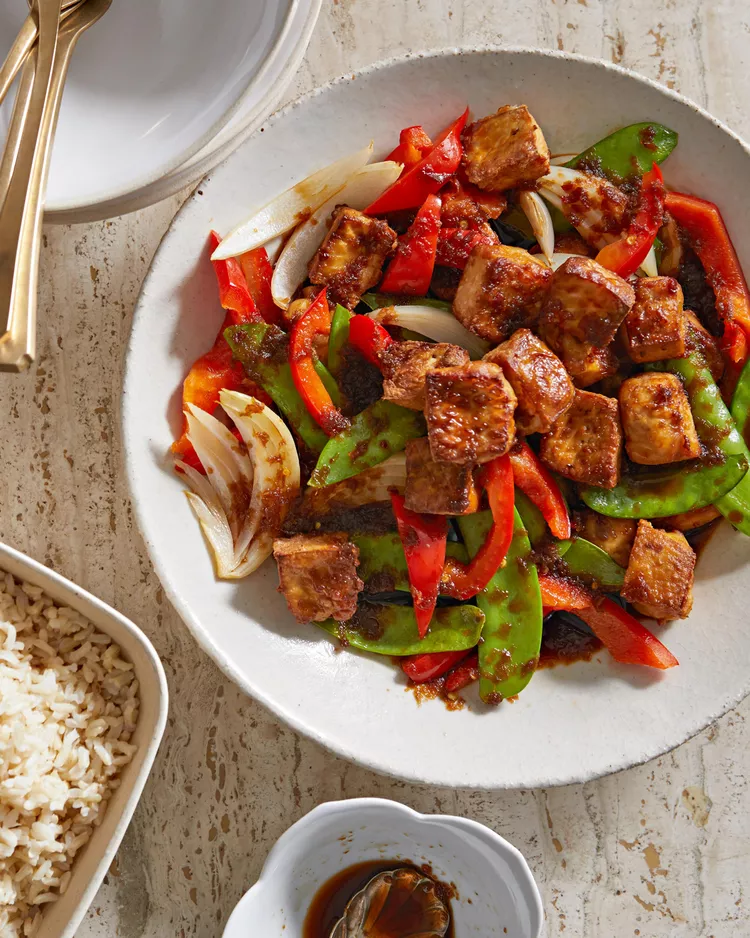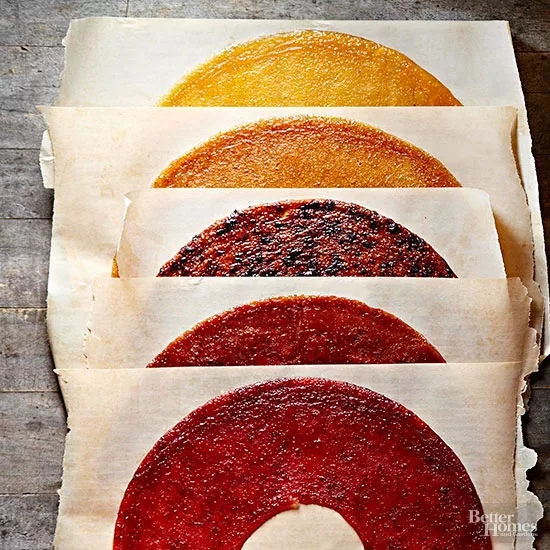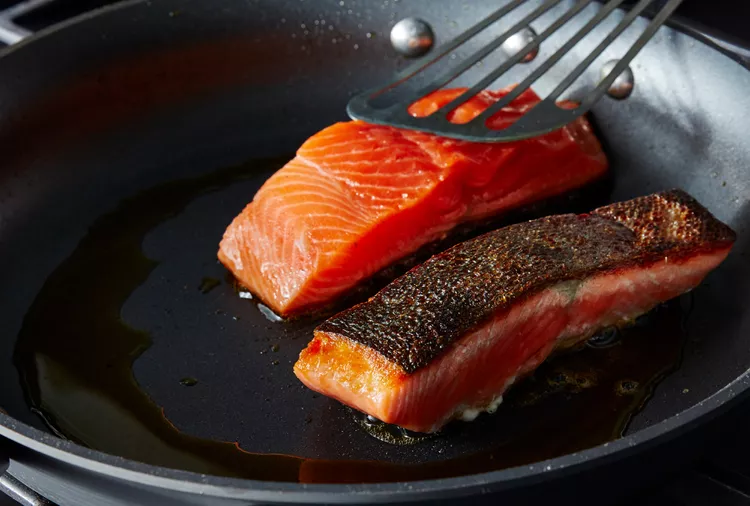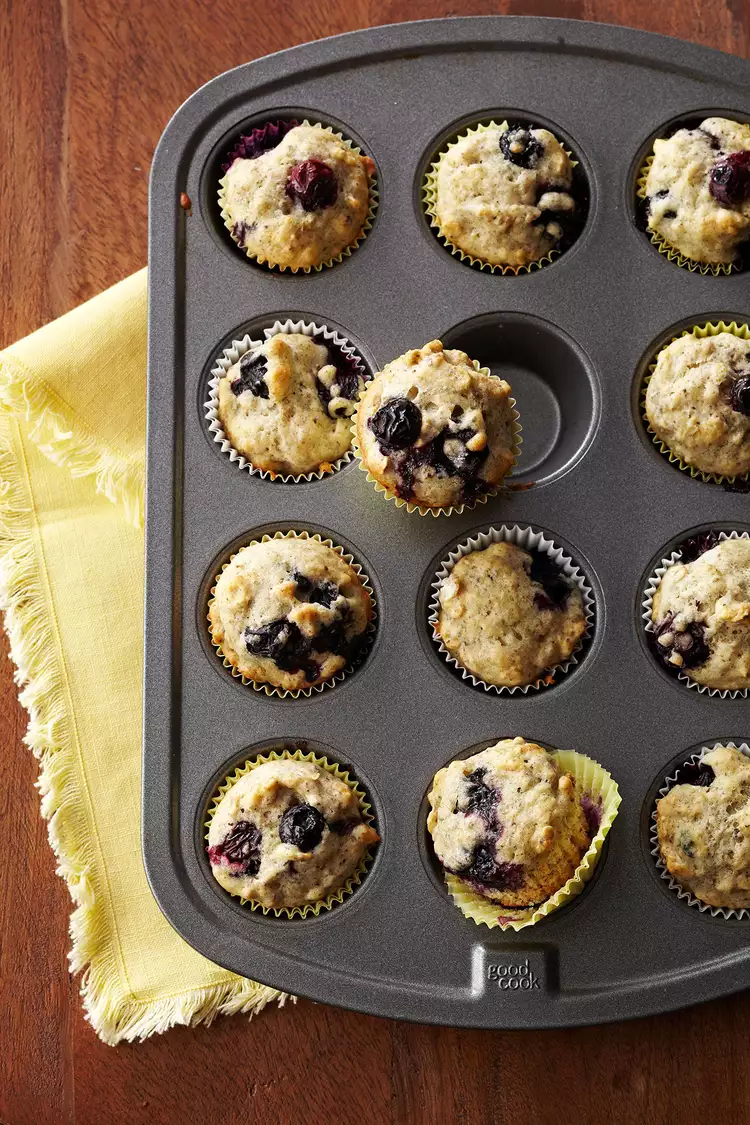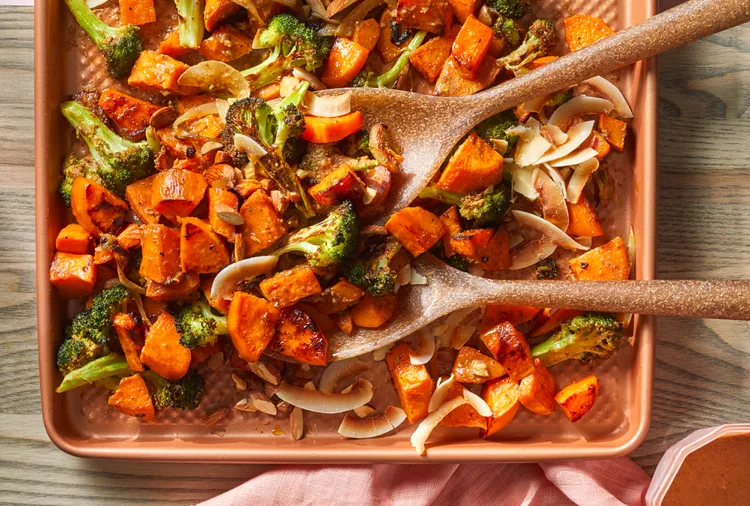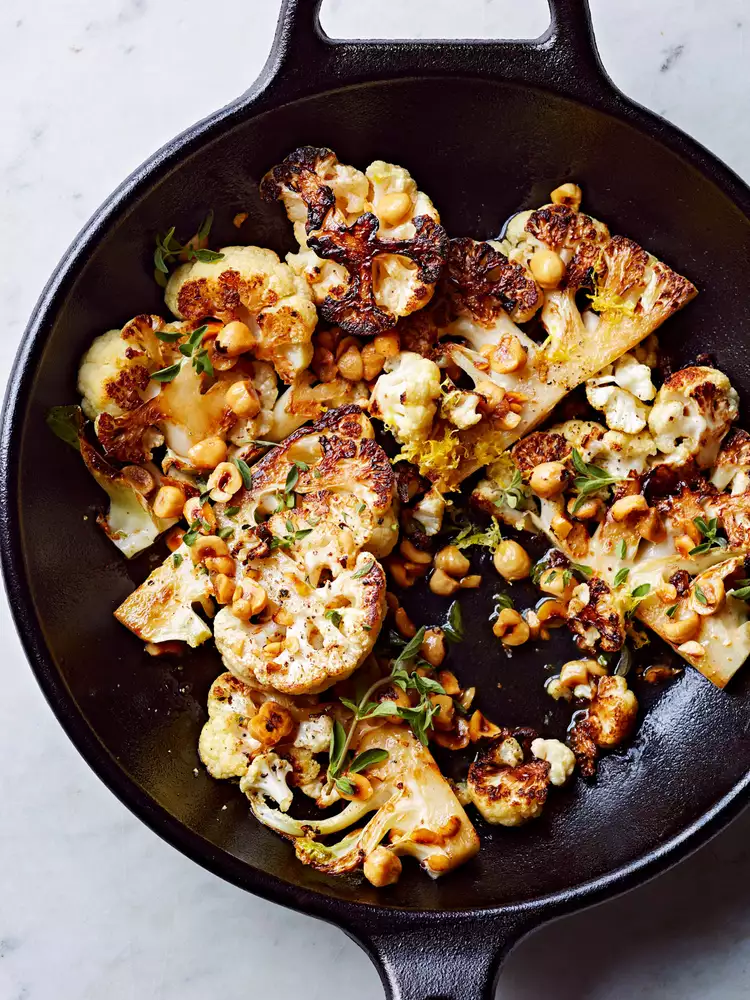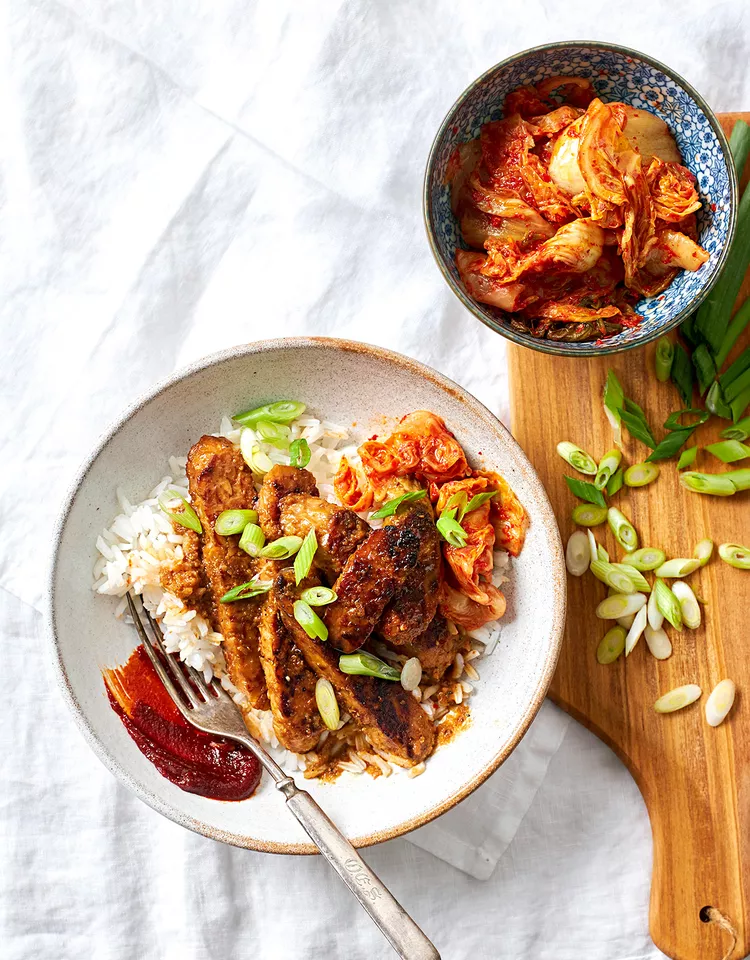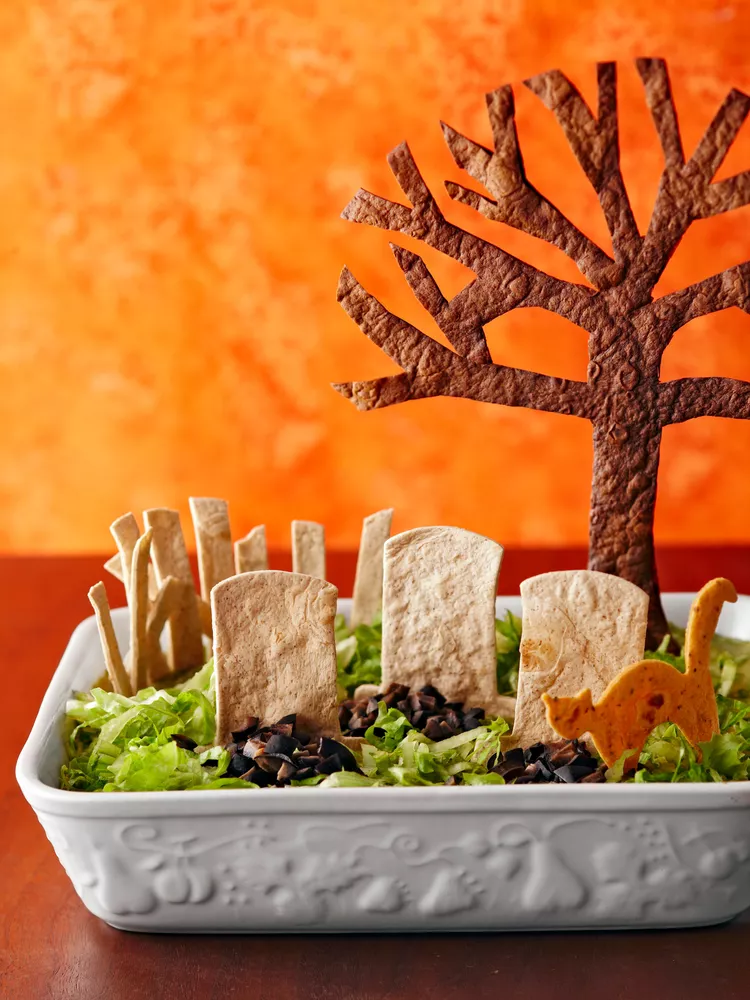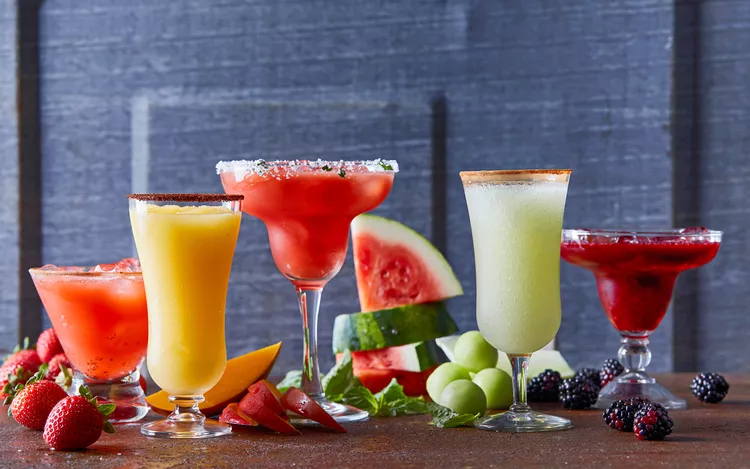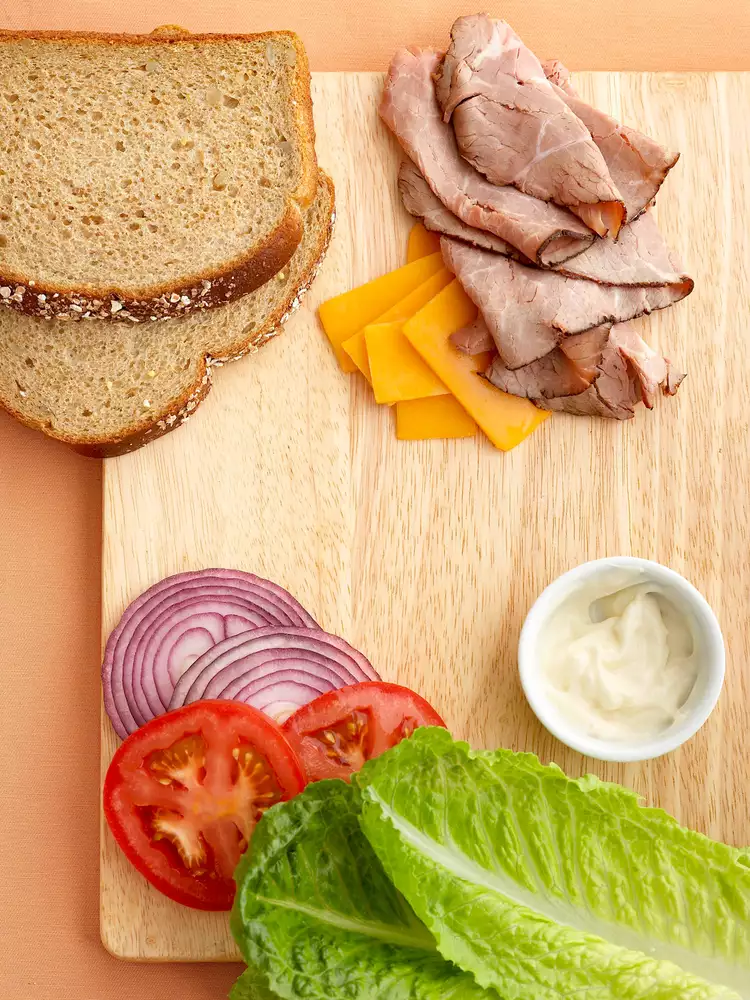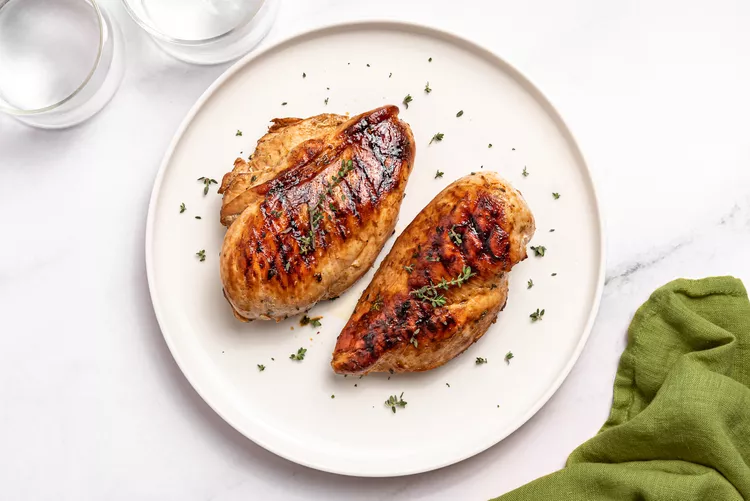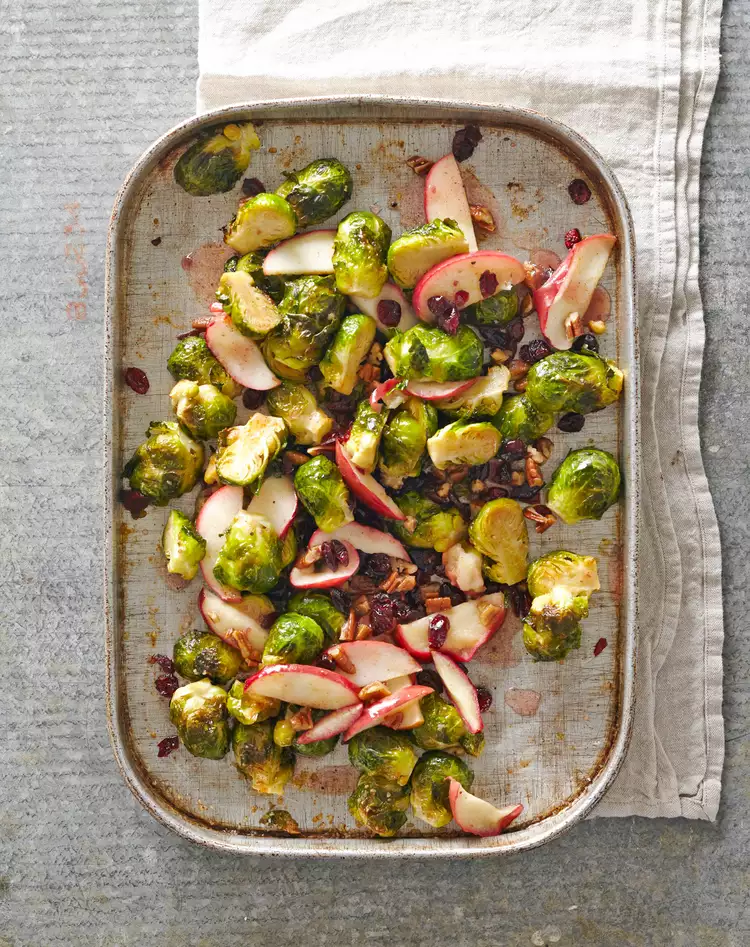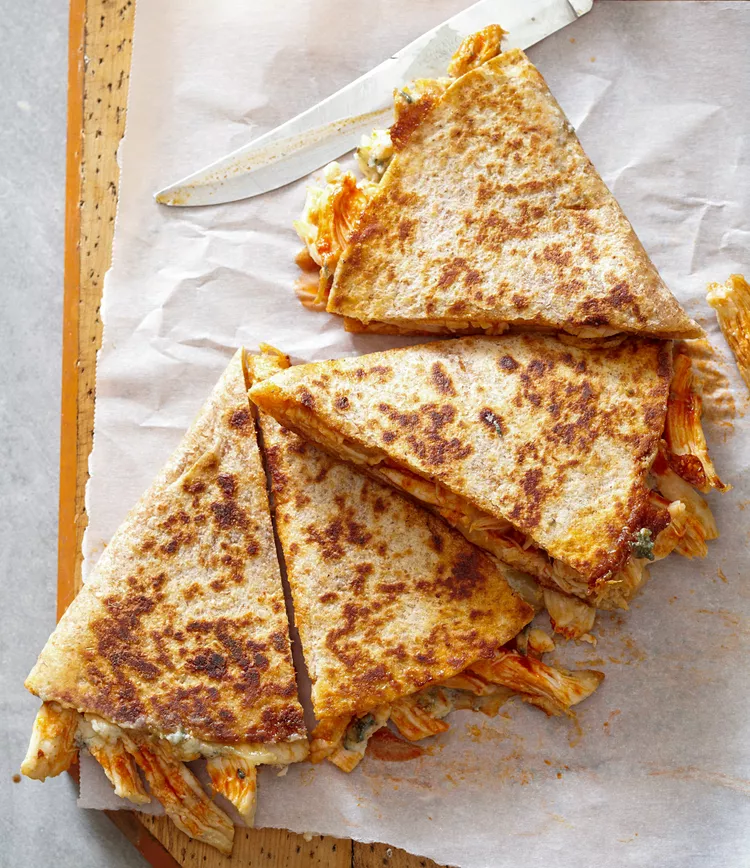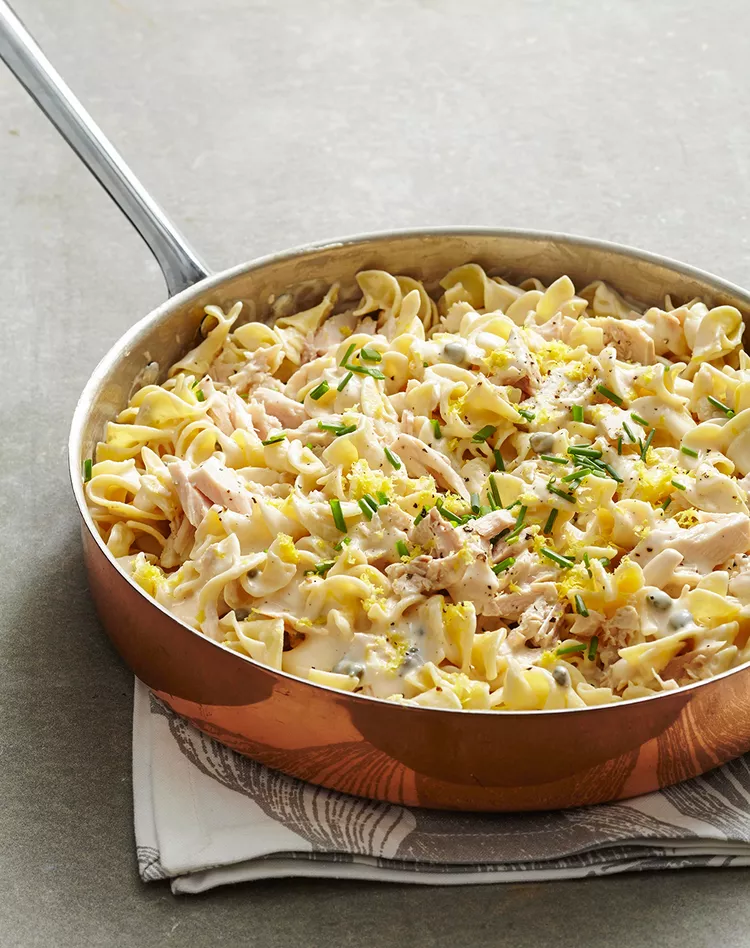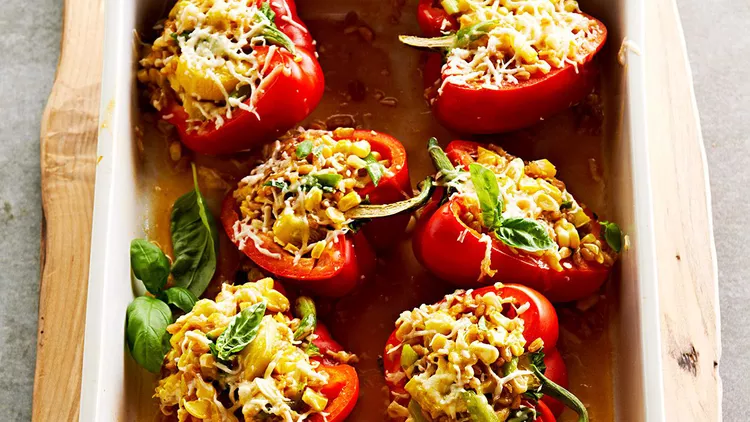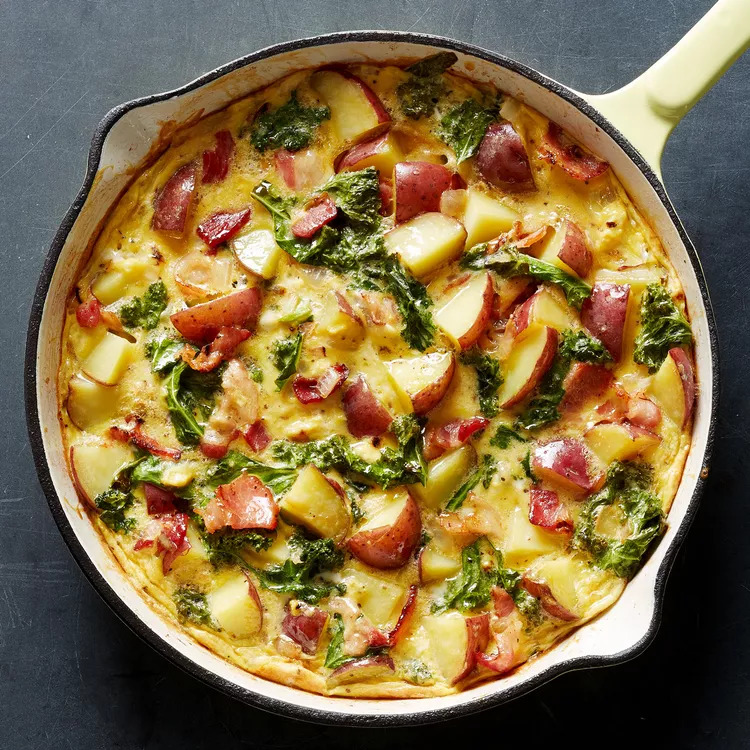Similar to the many customization options surrounding pizza and tacos, everyone seems to have their own opinions of how they like to make a grilled cheese sandwich. Choose your favorite bread, cheeses, and bonus fillings as desired. Then all that’s left to do is spread the outside of each slice with fat, and cook it in a skillet or on a flat-top grill until golden brown.
Softened butter is what we call for in our classic Grilled Cheese Sandwich. So is butter your only option—or even your best bet? Fat chance, says Sarah Brekke, M.S., Better Homes & Gardens Test Kitchen brand manager.
The Benefits of Using Butter to Make Grilled Cheese
Food historians believe that the ancient Romans savored something fairly similar to grilled cheese by putting cheese on bread, then warming it in a primitive oven.
“Butter has been around for nearly 9,000 years so it makes sense that it’d be the go-to fat for a toasty sandwich,” Brekke says.
The flavor and texture it provides backs up its popularity, she adds: “Butter gives that classic flavor we all know and love and yields a sandwich that’s browned and lightly crisp. If you go with salted butter, you’ll layer on even more flavor.”
5 Other Fats to Consider for Grilled Cheese Sandwich Recipes
Despite butter's benefits, it’s far from the only fat worth considering as you construct your sandwich.
Mayonnaise
If you’ve ever mangled your bread while trying to coat it in cold butter, you know it can be hard (and hard to slather). Mayonnaise is spreadable right out of the container, no softening or whipping required.
According to Brekke, mayo “gives good browning to the sandwich and many people feel that the bread underneath the crisp browned surface stays a bit fluffier.” And if you opt for kewpie mayonnaise, your coating will come with a subtle kick of savory flavor.
Ghee
This versatile cooking fat is made by heating butter until the fat, milk solids, and water separate. This means you're working with a more pure fat with a higher smoke point than if you opt for clarified butter instead of regular butter, Brekke says.
“The sandwich will crisp more evenly and you run less risk of the butter burning before the bread is sufficiently toasted,” she adds.
Plus, ghee doesn’t need to be refrigerated. Even when chilled, the texture is more spreadable than cold butter. That being said, we hear from readers that it isn't (yet) a staple in as many homes as butter or mayo.
Oil
Instead of spreading with butter, ghee, or mayo, you can choose to brush the bread with your favorite oil. (Olive oil and avocado are two popular pantry staple options for grilled cheese.)
“The bread crisps up nicely but will also take on the flavor of the oil used," Brekke says. "A neutral oil like avocado will really let the bread and cheese shine, while an olive oil might leave behind a little fruity flavor."
Nonstick cooking spray
In a pinch, “cooking spray works,” Brekke says, and results in a lower-calorie sandwich recipe. “You will sacrifice a bit of that rich, buttery, fatty flavor in the end though."
Bacon fat
If you cooked bacon for breakfast (or any other meal of the day), you can put those drippings to good use to cook your grilled cheese. Carefully transfer still-warm bacon fat to a mason jar, top with the lid, then store it in the refrigerator for up to three months.
When you’re ready to cook, add a scoop to the pan instead of spreading it on the bread, and fry away. “If you love the flavor of bacon [and if you eat pork products], this might be a great option for you,” Brekke says.
The Test Kitchen’s Choice for the Best Fat for Grilled Cheese
When we asked the Test Kitchen to give us the skinny about the best fat for grilled cheese, they struggled to come to a consensus about one that’s “best.”
“The majority called out mayonnaise for the ease of use and even browning," Brekke says. Many mentioned that the mayo-coated sandwiches fell a bit short in the flavor department, but not enough to keep several of our Test Kitchen professionals from choosing this method time and time again. Still, “butter was the clear winner for that classic grilled cheese flavor even though it’s a tad fussier.”
For the best of both worlds, spread each of your slices with equal parts mayo (kewpie, if desired) and softened butter.
Just like you might prefer sourdough over wheat bread, or consider Gruyère your go-to instead of American cheese, the best fat for grilled cheese sandwich recipes boils down to personal preference.
You can’t make a wrong choice among any of the above as long as the finished product comes out how you like it. Just be sure not to skip the fat all together.
“Without adding fat to the sandwich, a grilled cheese sandwich would taste as basic as two slices of dry toast out of your toaster plus a few slices of cheese,” Brekke says. “The fat provides richness and allows the bread to toast on the exterior while staying nicely soft and tender underneath.”
